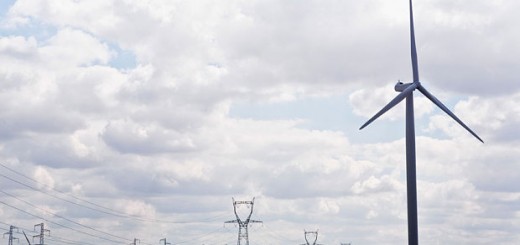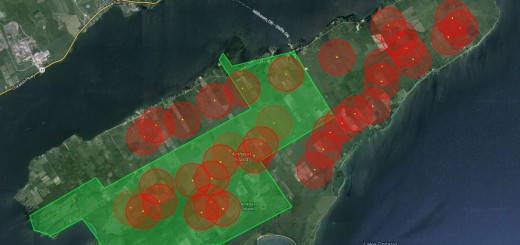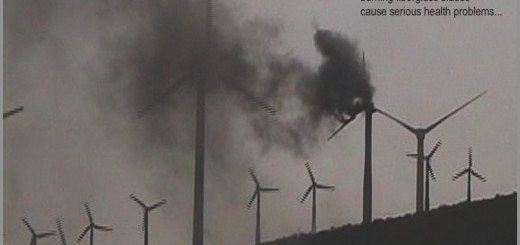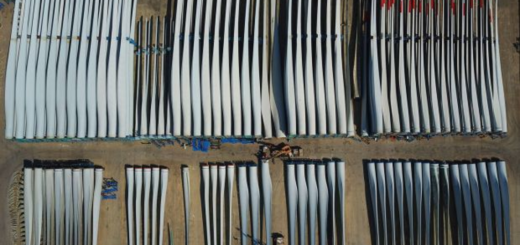OFFSHORE WIND: ROUGH WATERS FOR LEEDCO DEMONSTRATION PROJECT
Offshore Wind: Rough Waters for LEEDCo ‘Demonstration Project’ (environmentalists rise up)

By Sherri Lange — November 21, 2017
“The Icebreaker Windpower project can be seen as entirely moot: there will be no meaningful benefit to Ohio and its citizens. The chimera of jobs and a boosted economy will never become material; the obvious loss to bird and bat life scarcely needs a comment.”
READ MORE HERE.
Excerpts:
A show of “yeas” at the November 8th public meeting of the Ohio Power Siting Board (OPSB) at Cleveland City Hall failed to make a dint in the logical and passionate opposition. A few dozen supporters at a public meeting is not material for a facility that is uneconomical and environmentally invasive–and unneeded except for a poster child of what was Obama energy policy.
It is surprising that the OPSB has not closed the file on the now called “Icebreaker Windpower.” Much of the testimony in support of the proposal centered on job creation for Ohio, something that has noticeably not materially happened worldwide with wind projects.
Block Island, the US’s first offshore project of five massive and expensive turbines, reportedly created few hundred temporary construction jobs and about six permanent at a cost of $290 million, or $150,000 per powered household. This project is a monument to waste, an argument against offshore wind, not a demonstration project of any value.
***
Indeed, much of the opposition’s submissions and comments with the the US Department of Energy (DOE), US Army Corps of Engineers (USACE), and OPSB has centered around this inappropriateness of location and migration, migration, migration.
Needless to say, the entire Great Lakes and Region is inappropriate (if one can locate any appropriate placement), and if we use Wolfe Island as a gauge of the environmental damage, the prediction of substantial and “unacceptable” bird and bat kills in any of the Lakes, is irrefutable.
Objections have been reaching the OPSB regularly now for years. Despite the former Chairman Todd Snitchler’s formidable list of omissions, errors and evasions in process by LEEDCo (now FILE number: 16-1871 EL-BGN), a Draft EA to the DOE has been submitted via “Icebreaker Windpower,” consulting now with Norway’s Fred Olsen Renewables. Prior OPSB objections included ice throw, ecological considerations, noise, lack of appropriate technical data, as well as “contradictions, biases, omissions, and minimal assessments.”
Additional serious omissions or errors were noted in the environmental review materials provided by Kerlinger and Associates on behalf of LEEDCo. Letters from ODNR and FWS indicate numerous “Contradictions, biases, omissions, and minimal assessments.” Points 19 and 20 relate to the unscientific, biased, and facile studies given to the OPSB by LEEDCo. 19. The boat surveys monitoring birds appear to be biased relative to the results provided through the acoustic surveys. 20. It was suggested that risks to birds migrating in the project area were minimal. Based on the pelagic bird surveys conducted by the Division of Wildlife during 2011 and 2012, the results suggest that the area proposed is within areas of larger numbers of ring-billed and herring gulls. Both migrating water birds and waterfowl may be impacted by this wind facility through direct impact as well as displacement. (See the recent NA-PAW letter and comments re the EA to the DOE here.)
Master Resource reported on the sequential objections to the project as far back as in 2014. This is the same project, with the same omissions and errors, but infinitely more paper work.
***
Birds also generally migrate at heights above rotor sweep but they still get killed regularly. This can be attributed to birds (and I’m sure butterflies) being killed during the period when gaining and losing altitude, as well as during foraging flights.
Most if not all offshore turbines would be placed fairly close to shore as they must be affixed to the substrate. Based on this and at least one observation of butterfly lake crossing in the document you attached, I suspect most if not all butterflies crossing Lake Erie would be within rotor sweep height while gaining and/or losing altitude.
Cleveland and parks nearby provide significant roosting and resting positions for migrations across Lake Erie.
We imagine that the OPSB will continue to receive comments and objections: the hundreds perhaps who have enjoined to support this ignoble proposal, are outnumbered by millions, without any exaggeration, worldwide, and especially in North America both sides of the border, crying foul and objectionable, and “intolerable,” as Craig Rucker of CFACT (Committee For a Constructive Tomorrow) indicates.
Ohio is home to serious birding efforts, creating an economy with its own magnetic economy. Birding in Northwest Ohio in one spring, accounted for a boost of $30 million. The Ohio Sea Grant reports that tourism related to birdwatching in Ohio in six natural areas along Lake Erie,
generated $26,438,398 in 2011, created 283 jobs for those living and working in these coastal communities, generated $8.9 million in personal income, and contributed $1.9 million tax revenues directed to local and state coffers. Birders visiting Lake Erie provide significant revenue infusions to the regions year around.
(Enormous public interest has occurred this week, November 12, 2017, at the home of Tania Perry, Delaware OH, where more than 500 people have gathered to get a small glimpse of Ohio’s newest celebrity: weighing less than a ping pong ball, (point zero nine of an ounce), the super star Calliope hummingbird is a “mega rarity” this side of the Rockies. This rarely seen tiny bird has its own Facebook page. Ohio naturalist Jim McCormack says this is likely the most photographed hummingbird in the world.)
Misinformation by Western EcoSystems: “few birds venture”
Mr. Gordon of Western EcoSystems, environmental agency engaged by the developer, indicates that he is a bird lover, and that there are very few birds that venture out to the project site. “We’re in a zone where there’s not many waterfowl out there,” Gordon said. This statement is patently false and in stark contrast to evidence of the well-known bird, waterfowl included, abundance, sheer abundance, on the shores and offshore of Lake Erie. Ducks Unlimited, the world leader in wetlands conservation, points to Ohio as having one of the largest concentrations of wetlands organizations in North America.
The need to protect this migration route on steroids is abundantly clear in submissions to the DOE, USACE and OPSB. One submission included this note by US wildlife and wind energy specialist, Jim Wiegand:
“…. 400 bird species have been documented in this region. Visiting birders travel to this region of northwest Ohio. Lake Erie marshes make up the largest stopover habitats in the eastern United States between coastal habitats and northern breeding areas.” “On a single aerial survey done on November 16 of this year, 201,016 water birds were counted, including ducks, geese, swans, cormorants and eagles, all within the offshore waters of western Lake Erie.”
These high numbers are very significant, and create an entirely different scenario than those given in this project’s contrived bird surveys. (Jim Wiegand, letter to DOE, 2016)
From Spain, Raptor expert Mark Duchamp writes also that Western EcoSystems are “married” to the wind industry, and should not be counted on to report accurate predictions of mortality.
Western EcoSystems are not acceptable. They are practically married to the wind industry. Consultants should not be hired by the promoter: This is a clear conflict of interest. They should bear the approval of opponents to the Project. (Email communication)











